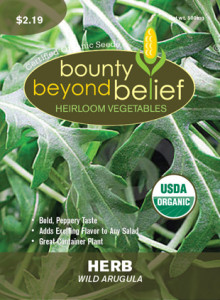Let them Sweeten
All About Cold-Sweetening
by Sandy Swegel
I spent the week with my sister Anne. It’s enough to make me doubt the entire idea or theory of DNA and genetics that suggest we are related in some cellular way. Except for the fact that we look like sisters, we are so different, the family joke ran this way. “You’re so weird. You must have been switched at the hospital.” “No, you’re so weird. You were the one switched.” After some bickering my mother would chime in, “I don’t know where either of you odd ducks came from. I must have been the one switched at the hospital.
It was evident as we were sitting around the kitchen table that she is a finisher, somebody who gets projects finished. I have to hold on to my coffee cup if I don’t want it cleared off the table half full. She wants breakfast finished and the table cleared.
It can be hard to share a garden with a finisher. Her idea of dealing with the garden as the leaves start to fall is to pull everything out right now and rake the soil nice and tidy and be done with it till next April. So naturally, I was howling as she’s shoveled up the beets and yanked the kale. “No, leave it alone. It’s finally getting really good. Don’t you know this is when the root vegetables get really good and sweet?!” Fortunately, we are adults and I skipped the “how can you not know that” remark and she threw up her hands and walked away muttering “Whaaateverr.”
Let them sweeten, cold-sweetening in vegetables is a real thing. Plants produce sugars through photosynthesis and store the sugars as starches. But in cold temperatures, plant break down the starches into “free” sugars and store them in cells to protect against frost damage. Scientists describe the process as “Sugar dissolved in a cell makes it less susceptible to freezing in the same way that salting roads reduces ice.”
And it makes the vegetables taste so good too! As long as you can pry the soil open before it freezes solid, you should leave the root vegetables like beets and carrots in the ground. Kale, chard and spinach full of sugar can be frozen solid first thing in the morning and be delicious and undamaged to eat at dinnertime. Cold-sweetened Brussels sprouts are worth fighting for.
The only vegetable you don’t want to cold-sweeten are potatoes, because you want them full of starch. That’s why you don’t store potatoes in the refrigerator. All the extra sugars make cold-sweetened potatoes turn brown during cooking. You reverse the process in potatoes by keeping them in a warmer room and the sugars convert back to starch.
Cold-sweetening is also why you store your winter squashes and root vegetables out in the unheated garage…someplace that doesn’t freeze but also isn’t as warm as the house.
Vegetables to cold sweeten:
Carrots, Beets, squash, kale and chard, broccoli, Brussels sprouts (Yes!), leeks, spinach, parsnips and radicchio, and best of all, Apples. Leave those apples on the tree as long as you can…they get better every day in the fall.
Photo credit: http://www.organicgardening.com/learn-and-grow/storing-vegetables-for-the-winter
http://lopezislandkitchengardens.wordpress.com/2011/11/07/sweeter-after-a-frost/


